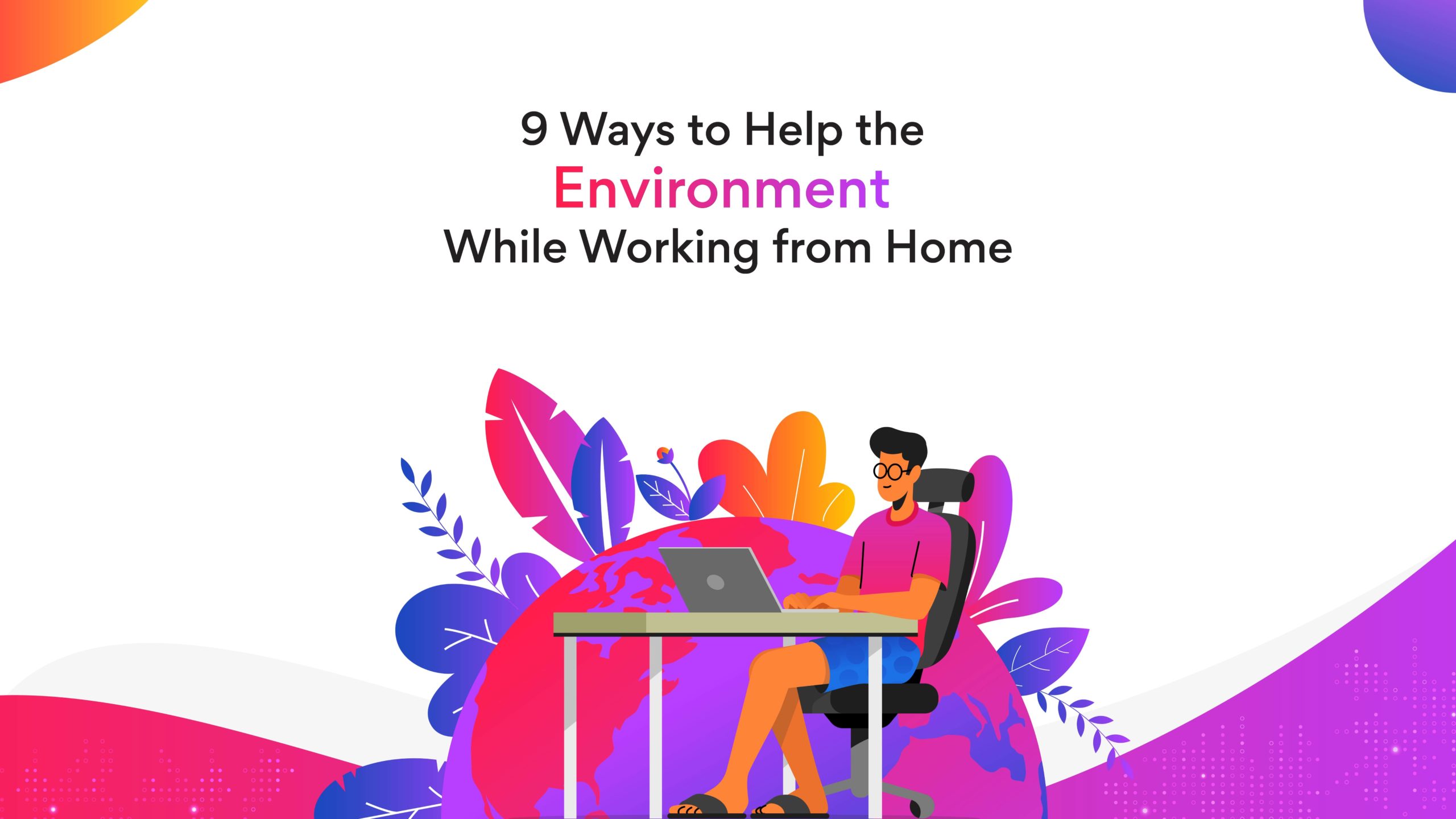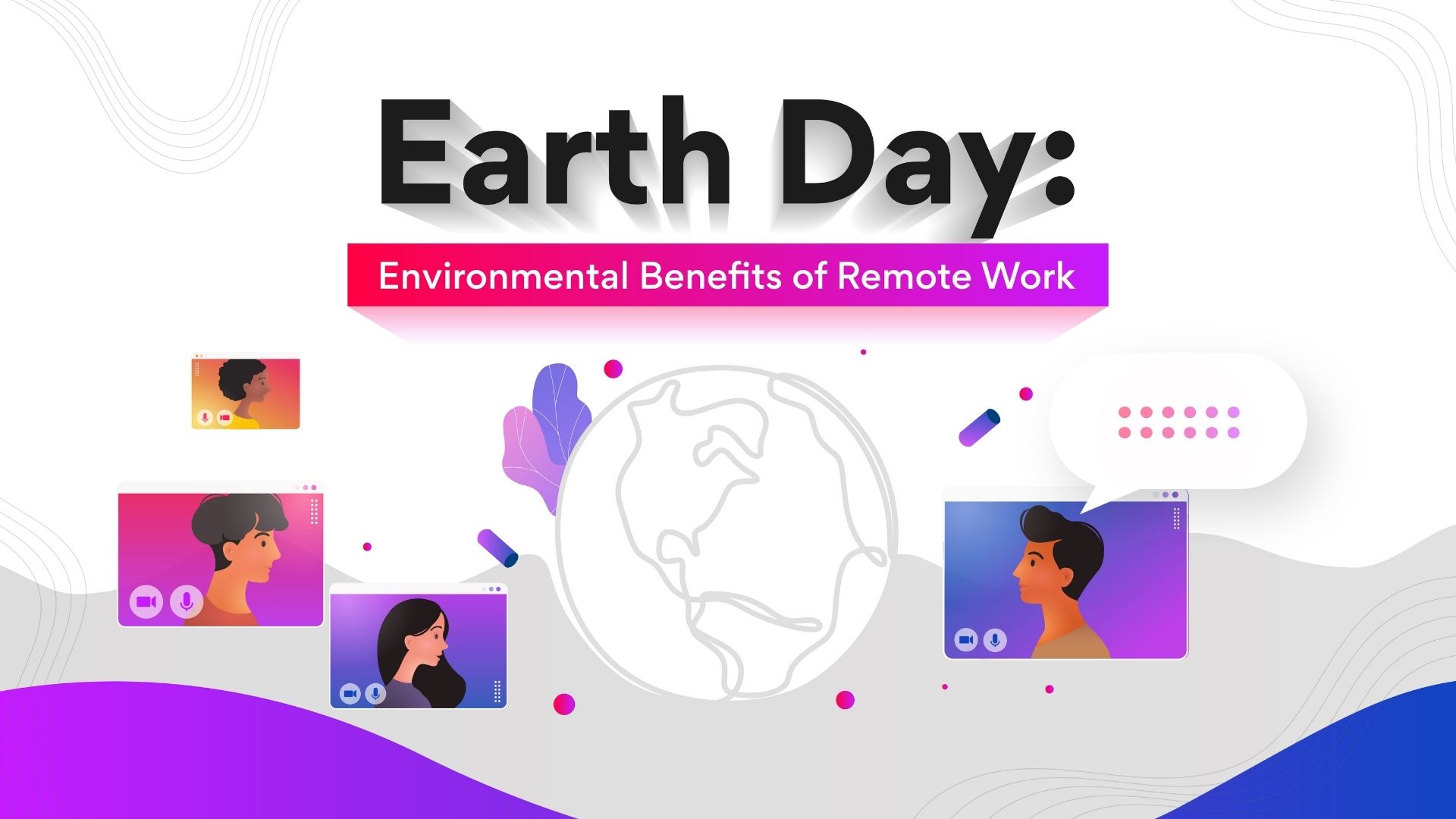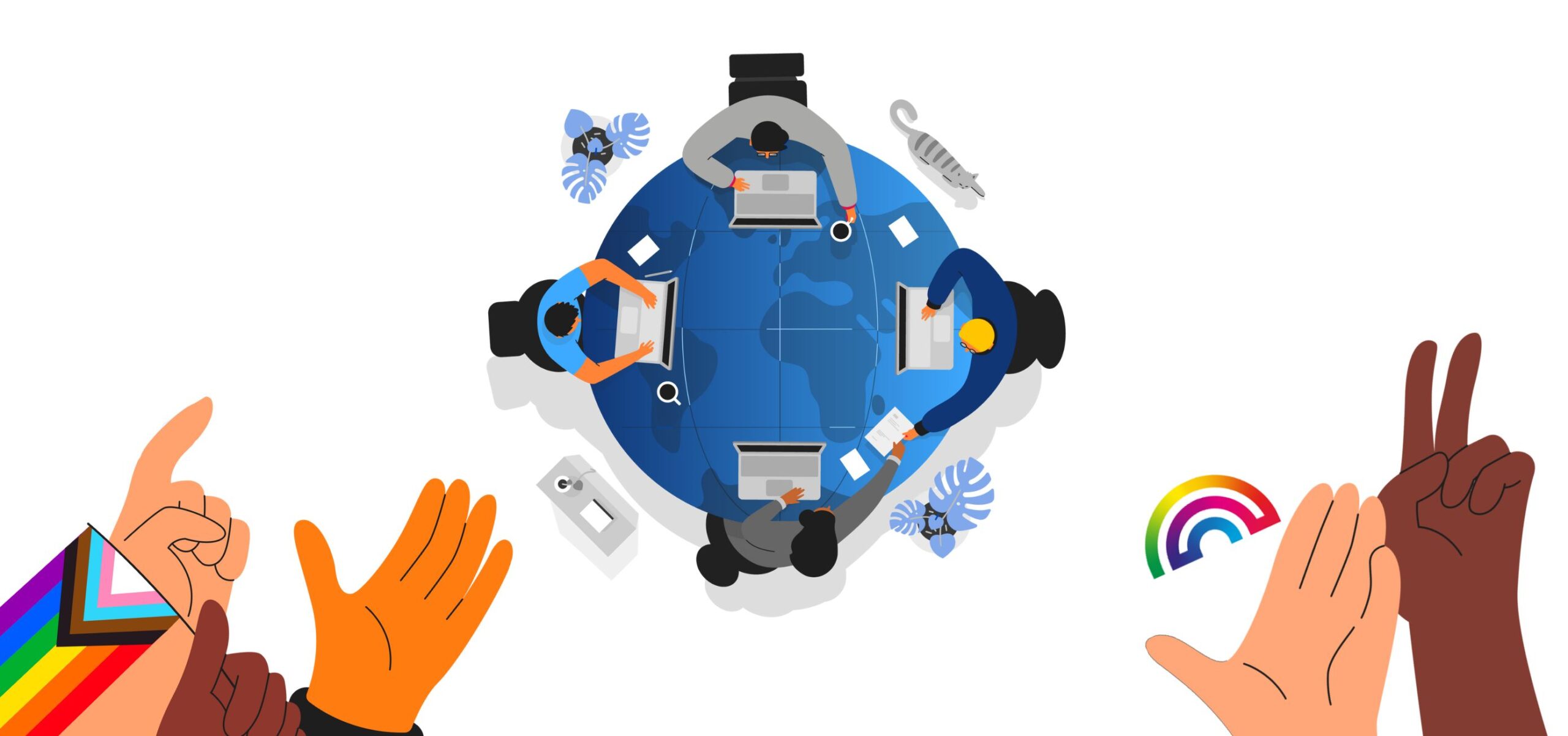9 Ways to Help the Environment While Working from Home
World Environment Day 2022 is here. So what can we do to save the environment on this day? What are some simple ways to protect the environment? How can working from home help the environment? How does working from home reduce carbon footprint?
Let’s find out!
Introduction
Billions of people globally celebrate World Environment Day on June 5 every year. World Environment Day aims to raise awareness about climate change and advocate solutions to heal the earth.
Remote work is one such solution. The remote setup has grown tall and strong over the past couple of years. Employees and businesses have benefited a lot from remote work. However, many of them are unconsciously harming the environment in the process.
According to a recent study, when people work from home, their energy consumption increases by roughly 20 percent. Also, they eat more packaged food in their free time and produce more plastic waste.
Contrary to popular belief, it doesn’t take a superhuman effort to become an environmental warrior. Simple things like making a grocery list for the month, using individual heaters instead of central heating, and baking with ceramic pans can make a significant difference.
Here is a list of nine more easy ways to help the environment while working from home.
A. Use natural resources wisely to save the environment
There are numerous methods to help the environment from the comfort of your own home. While some will take more time and effort, many others will only require you to watch your energy consumption. Remember that every action you take to reduce your environmental impact will benefit both the environment and your wallet.
Here are three steps to utilize natural resources in a better way:
-
Unplug appliances
Did you know your TV consumes electricity even when it’s on standby?.
Obviously, you can not go around your house every night to ensure every lamp, gadget, and electric appliance is unplugged, but using power strips that you can easily turn on and off can help. Using a power strip is the simplest thing you can do at home to save money and minimize your carbon footprint.
Note: Always plug high-voltage appliances, such as air conditioners, washing machines, and microwaves into direct sockets rather than power strips. -
Use solar panels
For those who live in sunny areas, solar energy is a fantastic option to save electricity costs and reduce carbon emissions.
If you reside in California or Montana, you’ll find that solar panels, while not cheap at first, will save you thousands of dollars in the long run. The cost of the panels takes roughly three to five years to pay for themselves, but after that, it’s free energy and net savings every year.
Most US states promote homes to use solar panels by providing many tax benefits and even paying up to 30 percent of the cost of the system and installation. In addition, energy companies will frequently compensate you for surplus electricity you return to the public grid. -
Use water wisely
Cutting back on water doesn’t mean living a monk life with short, icy showers in the winter. Instead, repairing and preventing little leaks can help the environment and save a lot of water.
With a smart water system like Flo by Moen, Kamstrup, Brio Aquus, etc., you can avoid water damage, leaks, and even dangerous molds. These systems can help you view your current water consumption, create conservation objectives, and measure your progress toward a specific target to save water bills.
Related post: Earth Day: 5 Environmental Benefits of Remote Work & Hiring Remote Worker
B. Reduce food waste to help the environment
Every year, Americans throw away 133 billion pounds of food. That means that over 40 percent of their food ends up in the trash. Then the trash, if not composted, ends up mixing with plastics in the landfills and rot for years, producing tons of harmful gasses.
So, here are three steps to waste less food:
-
Make a shopping plan for groceries
The golden rule of grocery shopping is to never go to the store hungry. With this step, you can avoid buying gummy bears, chocolate bars, and other unhealthy snacks from the checkout counter.
Also, by approaching the aisles with a list in hand, you can avoid filling your cart with products that will eventually wind up in the trash.
Make a meal plan for the entire week ahead of time. Make a list of all of the items that each dish requires. There shouldn’t be much food leftover as long as you follow the meal plan!
In addition, prefer bulk buying for the month, as bulk buying is good for the environment.
Consider buying huge quantities of non-perishable items like pasta, cereal, and nuts. Just make sure they’re well-sealed, so they don’t go bad before you use them. -
Track your trash
Do you want to know how much money you’re wasting? Start keeping track of every rotten banana and a half-eaten box of cereal you throw away regularly.
Keep an eye on what’s going bad in the fridge as well. Use apps like Fridgely and Fresh Box. These apps will notify you when the apple juice or tomato sauce container on the middle shelf is about to expire. -
Create a compost pile
To compost, you don’t need to live on a farm or even have a large backyard to compost. Composting is the process of returning nutrients to the ecosystem, keeping food out of landfills and waterways while making the garden greener.
You can use apps like ‘ShareWaste’ and follow YouTube channels like ‘Growit Buildit’ to learn more about composting.
C. Cut down on plastic to help the environment
People require a fundamental change in thinking about how plastics are made, used, and discarded to correct the plastic waste problem.
Disposable plates, plastic forks, and ketchup packets may appear insignificant, but they add up quickly to plastic waste. Food packaging and containers generate 39 million tonnes of waste each year, accounting for approximately a quarter of all solid waste produced in the US.
Many of these containers wind up in landfills, emitting methane gas into the atmosphere.
So, here are some tips to reduce plastic consumption:
-
Carry your cups
Starbucks uses 8,000 paper cups every minute, amounting to more than 4 billion cups each year. Now imagine how many plastic cups all the cafes and restaurants produce. A lot, right?
Carrying a travel cup or a reusable mug can make a big difference in protecting the environment from plastic cup pollution.
Here are five popular travel mugs available on Amazon:
- MiiR Flip Traveler
- KeepCup Reusable Coffee Cup
- Zojirushi Stainless-Steel Mug
- Fellow Carter Everywhere Mug
- Hydro Flask Travel Coffee Flask
-
Do away with cans
It’s wasteful to use a new disposable aluminum tin every time you bake a cake or roast a chicken. Instead, invest in some reusable metal and ceramic baking pans.
Also, several companies are now offering reusable jars to store packaged products, along with a subscription service to refill the jars with essentials.
Re-up Refills, Simple Sundries, and The Good Fill are some popular startups offering refill services in the US. -
Recycle, reuse, repurpose
It may be tempting to throw away every beverage bottle and peanut butter jar. However, you can easily repurpose their plastic and glass.
Consider them free containers for planting seeds, storing grains, nuts, and other bulk items, or storing all the extra cash you saved by recycling. You can also keep them to ship something in the future.
Bottom line: You can help the environment by making small tweaks to your lifestyle
Working from home can save employees and employers a lot of money, but it’s also necessary to consider the environmental implications. In doing so, organizations can ensure that WFH stacks upon a comprehensive set of sustainability measures and that they achieve their sustainability goals. Like Turing does.
Turing uses AI AI-backed Intelligent Talent Cloud to source, vet, match, and manage the world’s best software developers remotely. Check out the Hire Developers page to know more!
FAQs
- What can we do to save the environment?
Reduce your energy and water use, and change your eating and commuting habits. Also reduce, reuse, and recycle to be more environmentally friendly. - How can I help the environment at home for kids?
Here are six easy, everyday tips to help the environment:- Turn off the water tap when brushing your teeth
- Switch off the light when you leave the room
- Start a backyard or balcony garden
- Avoid disposables
- Recycle and reuse plastics
- Compost leftover food
- How can working from home help the environment?
According to a study, working from home can result in a 10 percent reduction in nitrogen dioxide emissions, which is the principal pollutant produced by traffic emissions. - How does working from home reduce carbon footprint?
Working from home helps you save money on gas and reduce your carbon footprint. In addition, employees in remote work conditions use telecommunication, which further reduces travel and carbon footprint.
Tell us the skills you need and we'll find the best developer for you in days, not weeks.












